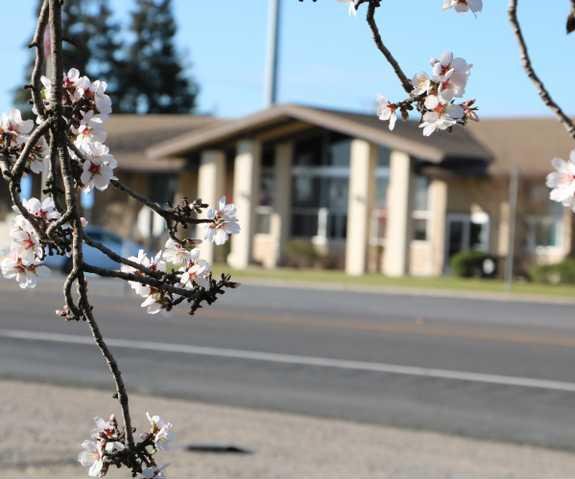LEE VINING — Highway 120 is a magical ribbon of asphalt.
Not only does it take you to the Cathedral of the Sierra — Yosemite National Park — it winds through the Yosemite High Country and peaks at the loftiest section of pavement in the Sierra at 9,600 feet before descending down the stark granite beauty of the Lee Vining Canyon.
But the real visual, one-of-a-kind treat awaits after a 5 mile descent to Highway 395 when you first spy the prehistoric ecological marvel, nestled at the base of the eastern Sierra — Mono Lake.
The remnants of what was once the Great Basin lakes spread across what today are Utah, Nevada, and surrounding states can be found not just in dry lake basins but Pyramid Lake, Salt Lake, and Mono Lake. The most unique of the three is Mono Lake, is just over a three hour, 157-mile drive from Manteca.
Walk along the shores of Mono Lake and you’ll be struck by two oddities of nature you won’t find anywhere else in California.
First, there are the brine flies. Each step you take, they swarm up from the ground and buzz your ankles without ever landing on you.
The other is perhaps the most eerie thing you’ll see — tufa towers.
The tufa (pronounced “toofah”) are what forms when the carbonates in the salty lake water combine with the calcium on fresh spring water that forces its way up beneath the lake’s bottom. They combine to become limestone. Tufa is found in other alkaline water but the quantity and variety of tufa towers found at Mono Lake are unlike any elsewhere on earth giving you the feeling you’re gazing at a half hobbit, half Star Wars landscape with a whimsical touch.
Some of the towers on the south shore are between 200 and 900 years old while those high above the current lake bed are estimated at 13,000 years of age or older.
Make no mistake about it. The appeal of a stay in Lee Vining — the only eastern gateway to Yosemite National Park — is Mono Lake and the volcanic scars that Mother Nature has carved into the landscape.
Since Mono Lake is 2.5 times saltier than the ocean and eight times more alkaline, a swim in the waters is an experience unparalleled anywhere else. The buoyancy you experience in a swim gives you a strange yet relaxing feeling of calm. Just be careful to keep the water out of your eyes and any cuts as it will sting.
The 60 square miles offer ample opportunity for boating and canoeing but you are advised to stay close to shore unless you are familiar with the lake since shortly after mid-morning breezes kick up and often turn into severe winds.
Mono Lake born
760,000 years ago
The information center on Highway 395 and Third Street is a Mecca of sorts for those who joined the Save the Mono Lake campaign in 1978 to greatly reduce the Los Angeles Water Department’s diversion of fresh water flows into the lake in a never-ending bid to quench the thirst of the L.A. Basin. Mono Lake, which has no outlet had been steadily shrinking the lake which to half of its 1941 levels. Seven streams at one time provided 65 percent of the freshwater flow into Mono Lake. By 1978, they were providing 17 percent of the water supply for Los Angeles. The direct result was a drop of 40 feet in lake elevation and doubling the salinity.
It is at the information center that you can browse perhaps the most diverse book selection on California water politics in one spot (at least at what is primarily a tourist attraction) as well as find out more about the committee’s ongoing efforts to save one of North America’s oldest lakes as scientists put its birth at 760,000 years ago.
To properly explore Mono Lake, you need to start at the information center.
You’ll find out about the Mono Craters on the south shore that range from 600 to 40,000 years of age. Several are easily accessible by car, others by short hikes.
Most roads providing access near the shore are classified as four-wheel drive including the access to Navy Beach which is the best place to launch a boat even though there is no ramp. Slow driving allows you to reach many points on the south shore as long as your vehicle has fairly decent clearance.
There is excellent access at the Mono Lake County Park just north of Lee Vining that includes plank pathways that take you by high and dry tufa towers and to vista points where you can see others in the water. The northeast side of the lake is where you can access a fairly decent dirt road to take you to the amazing Black Point fissures where the power of the earth is revealed in tortured layer after layer of rock.
These seven streams, by the way, are home to some of the best trout fishing you’ll find in the eastern Sierra. The lakes at Tioga Pass alongside Highway 120 are just 12 miles away.
If fishing isn’t your bag, a 45-minute drive north of Lee Vining takes to Bodie — the best and most well-preserved, historic ghost town in the country bar none.
There are numerous camp grounds in the Lee Vining Canyon, June Lake Loop and elsewhere maintained by the Forest Service and Mono Canyon. The chamber at the information center has details on camping and motels.
To reach Mono Lake from Manteca, take Highway 120 east into Yosemite National Park (you have to pay a $35 entrance fee that’s good for a week) and take the high country road (which still Highway 120) at Crane Flat.
To contact Dennis Wyatt, email dwyatt@mantecabulletin.com






